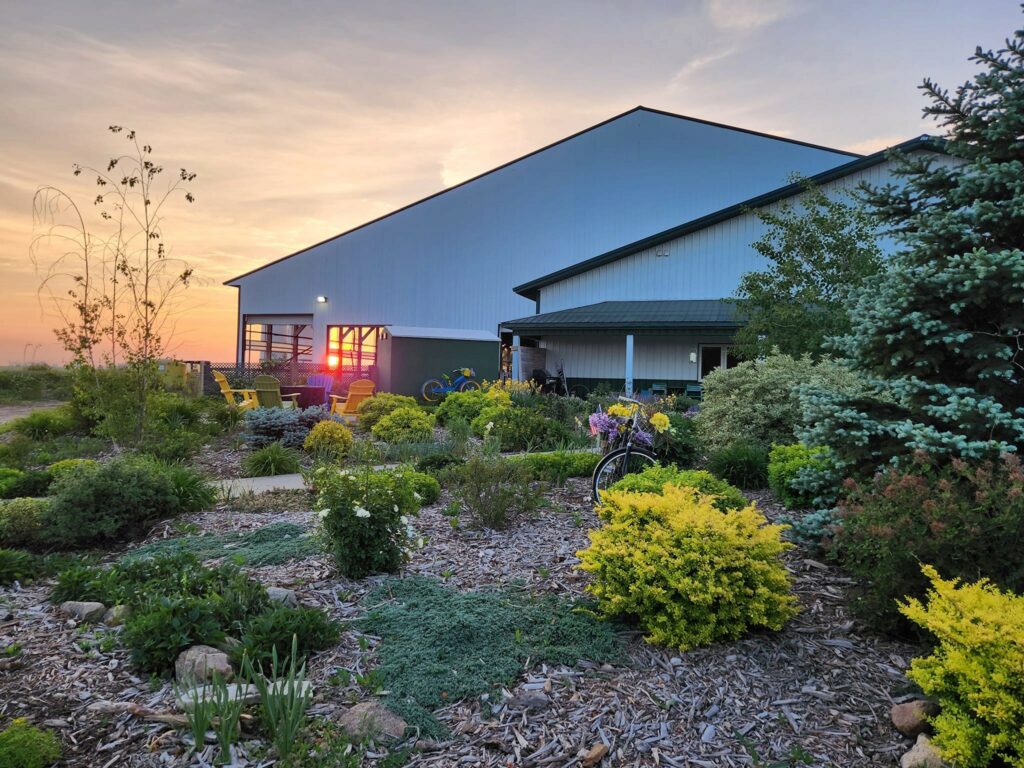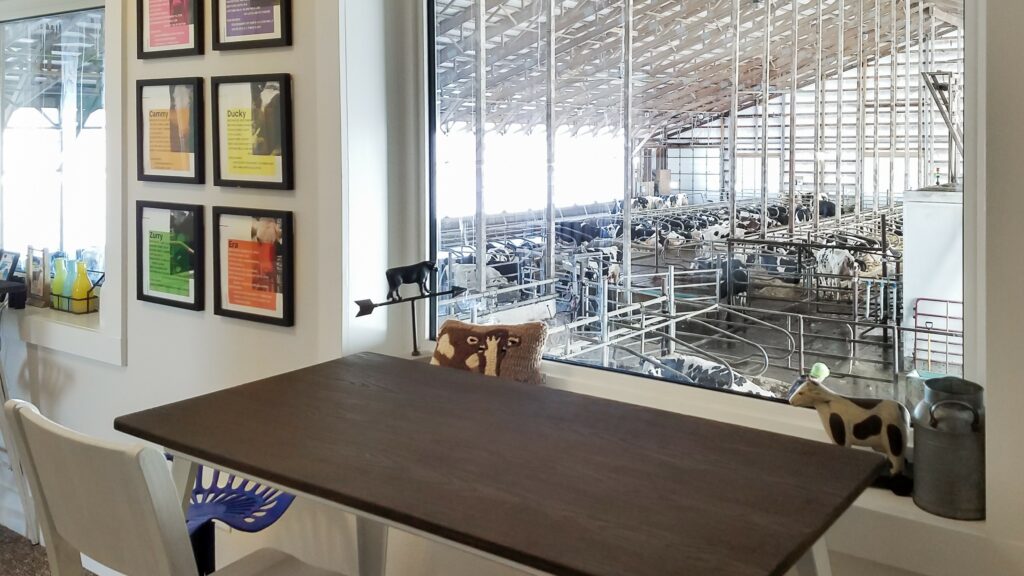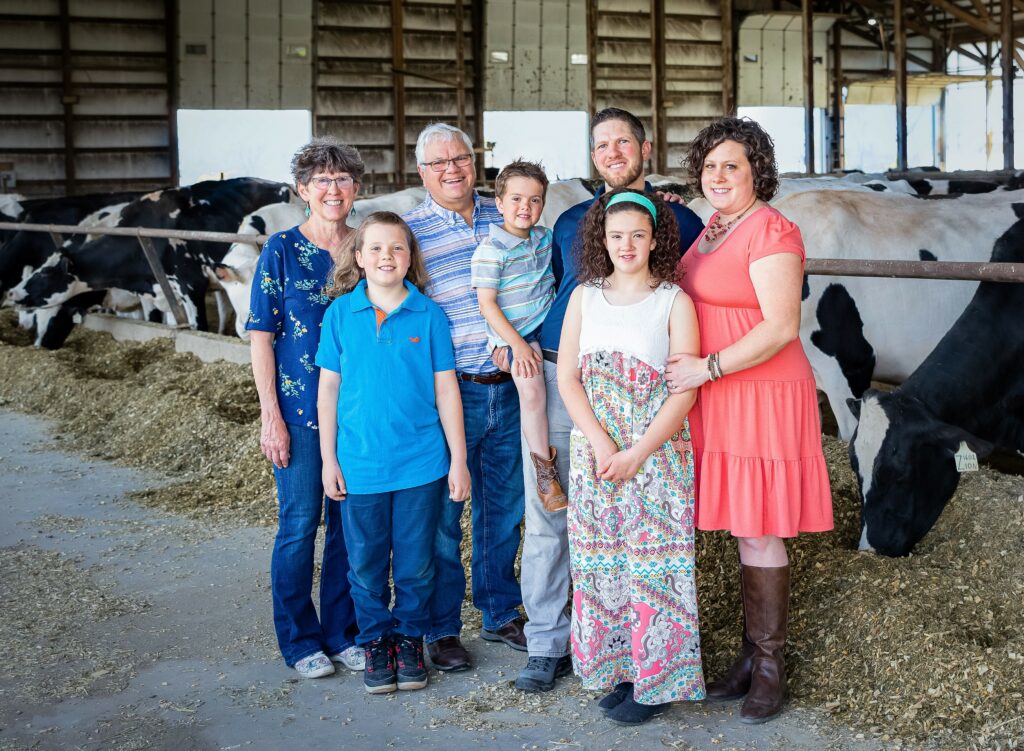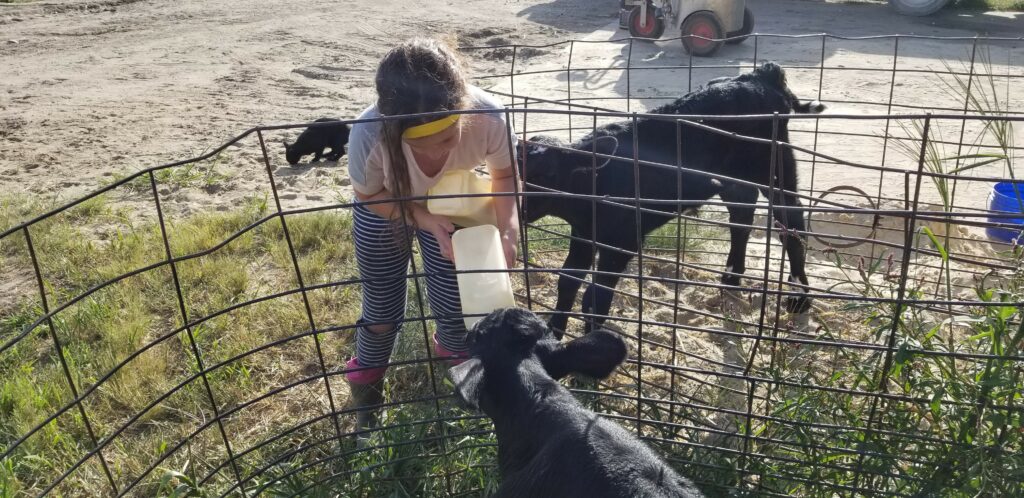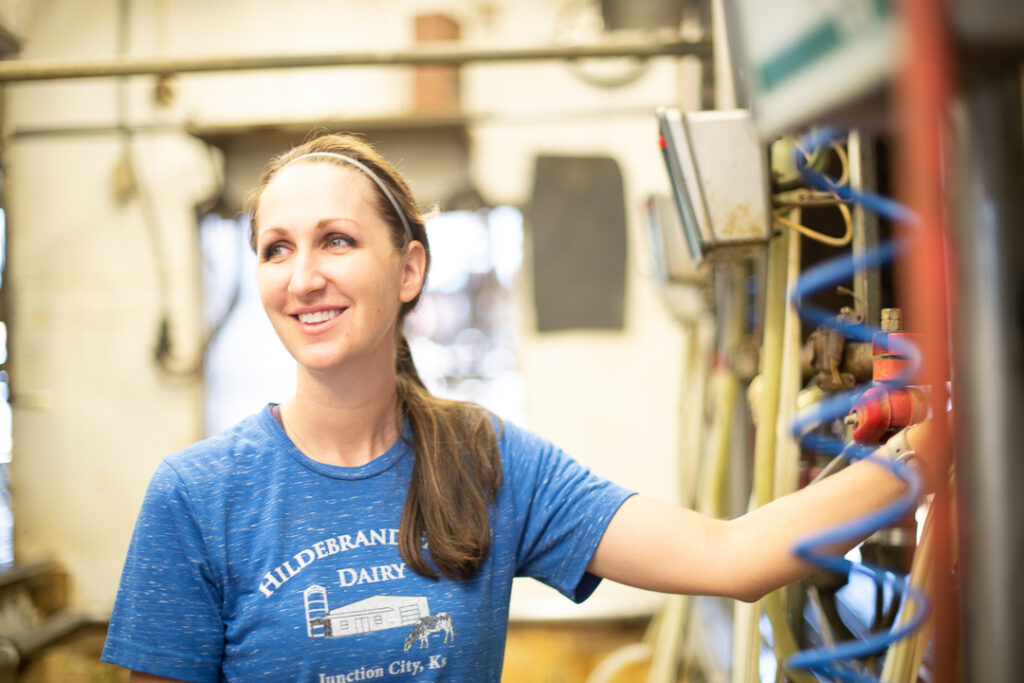New Day Dairy Farmer Lynn Bolin
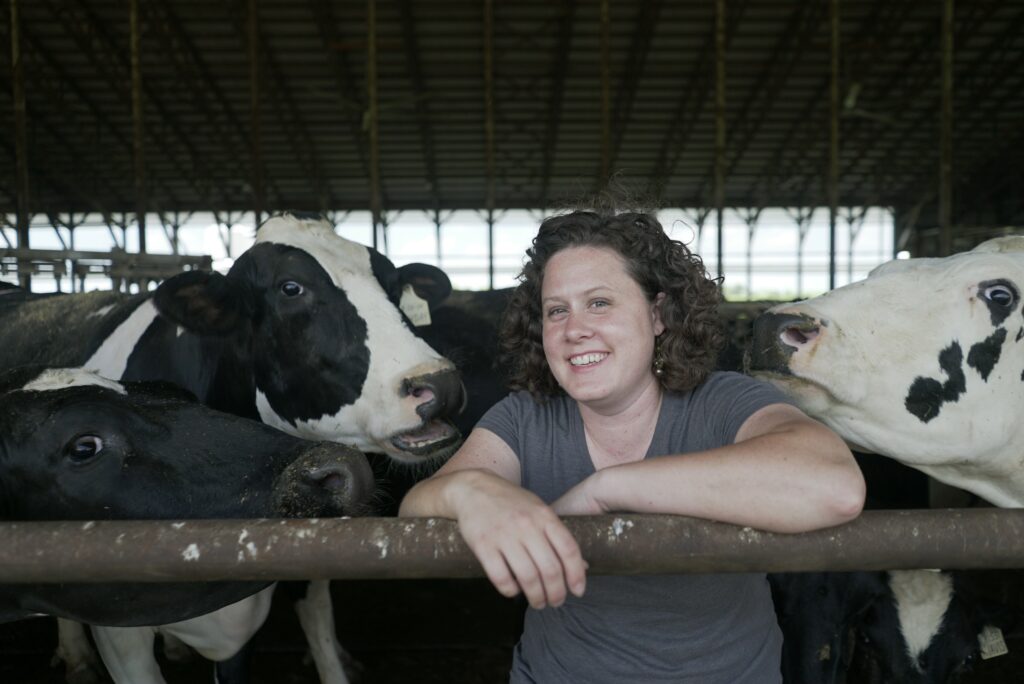
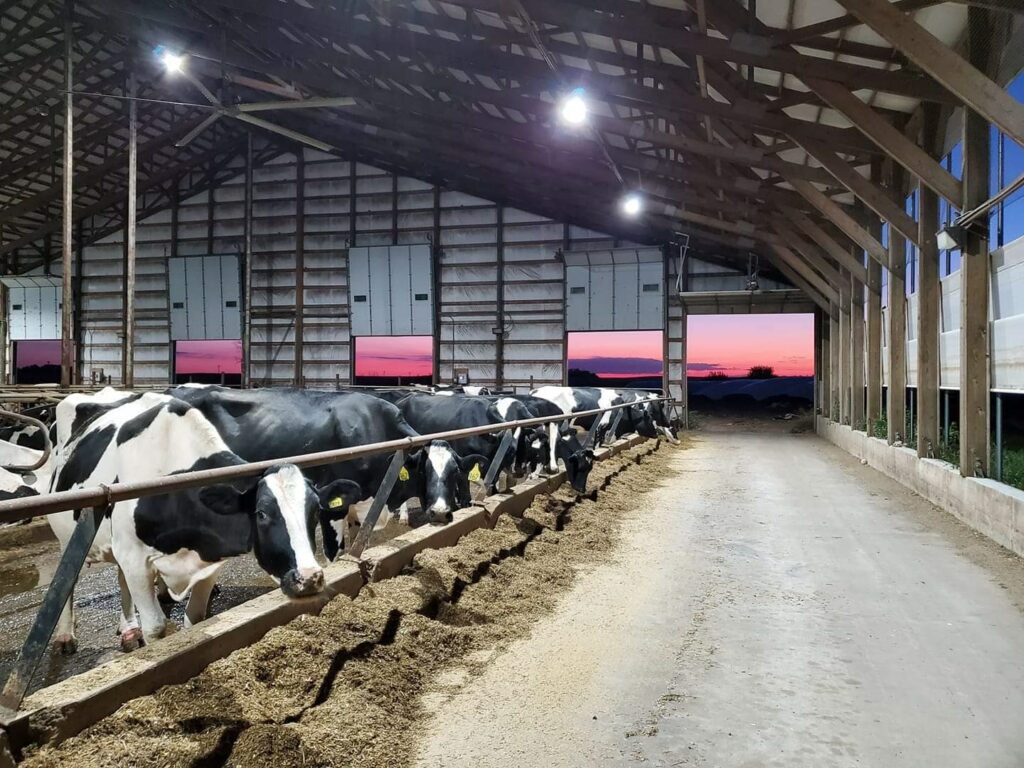
When cows get sick, farmers like Lynn and Dan work with a vet to get them well. But what about the milk? Lynn walks us through the process of milk safety starting at their farm.
The cows on our farm, New Day Dairy in Clarksville, Iowa, are typically healthy. But sometimes they get sick from things like mastitis (who can relate?) or infected cuts, etc. Obviously when these things happen, the cow isn’t feeling very well. That’s when we work with our veterinarian. Sometimes the vet will prescribe a sick cow an antibiotic to help them fight the infection and feel better.
So how do we keep the milk safe when a cow is sick? It’s a great question. Here’s the scoop.
To start, it’s important to know that we have a robot, Rita, milking our cows. Rita is part of a computer system that tracks all kinds of things for each animal, including milk production, health status and medications. If our veterinarian prescribes medication to a cow, my husband Dan goes into the computer system to record that he’s going to give that particular cow that prescription. The system then tells Rita to take that cow’s milk and separate it from the milk heading to the cheese plant until Dan tells the system that the milk is safe again. Are you wondering why Dan records the medication before he’s given it to the animal? It’s a safety protocol to ensure the cow’s milk does not enter the farm’s supply once it has received the prescription. Ever get distracted on your way to write something down? Doing it first ensures distraction doesn’t happen.
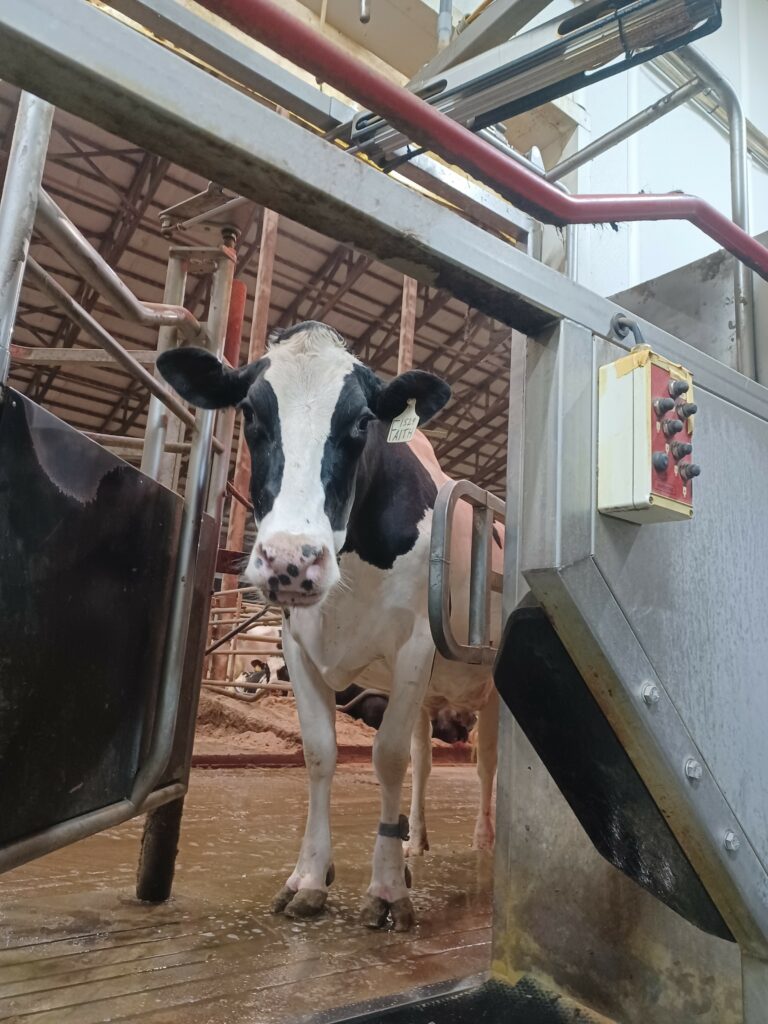
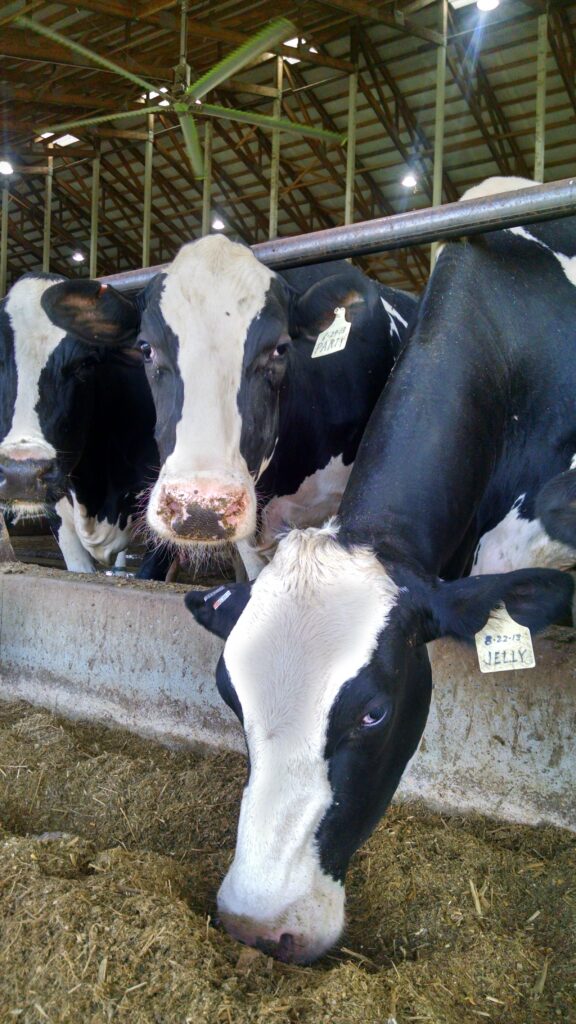

Next, our milk from all of our cows (minus the separated milk from any cows taking antibiotics) is held in a refrigerated tank until the milk truck arrives to bring it to the cheese plant. Our driver takes milk from our farm every other day. Upon arrival, the driver takes several labeled vials of milk from our tank and sets them aside for testing. Then the rest of the milk gets pumped into the truck. Once the driver arrives back at the plant, that truck is filled with milk from a variety of dairy farms in the local area. The driver takes all of the labeled vials and sends them into testing. If any vial tests positive for antibiotics, it’s a bad deal for that specific farm. First, the entire tank for that specific truck is dumped. Second, the farm responsible has to pay the cost for their own milk plus the milk from each of the other farms in that tank. The financial penalty is heavy and provides another safeguard.
We are part of Prairie Farms, which is a cooperative of around 650 farm owners. Our milk at this stage is at a Prairie Farms cheese plant in Luana, Iowa in a tank with milk from other farms in the region. The plant takes all of the collected milk through a process called pasteurization1. Once it’s pasteurized, the milk is used to create a variety of milk and cheese products for grocery stores and restaurants including cream cheese, swiss cheese, havarti, gouda and beyond.
But that’s not the end of the story. So what happens to the cow who was given the prescription? No two animals are the same, which means every animal’s body will process the medication differently. So we have to be careful to follow the prescription precisely. When the medication and the withdrawal period are complete, we test a vial of that cow’s milk. Once the milk is free of even a trace of that medication, Dan tells the computer to allow her milk to go back into our supply. We have a record of the entire process in our system, our milk tank is safe from any antibiotics residues, the cow can continue to make milk as long as she is able and Rita doesn’t have to separate her milk anymore.
Want to see the process for yourself? We give tours and rent out our on-site GuestBarn for a unique sleep-with-the-cows experience. Come join us!
1 A process named after scientist Louis Pasteur that applies heat to destroy pathogens in foods. Source: International Dairy Foods Association

